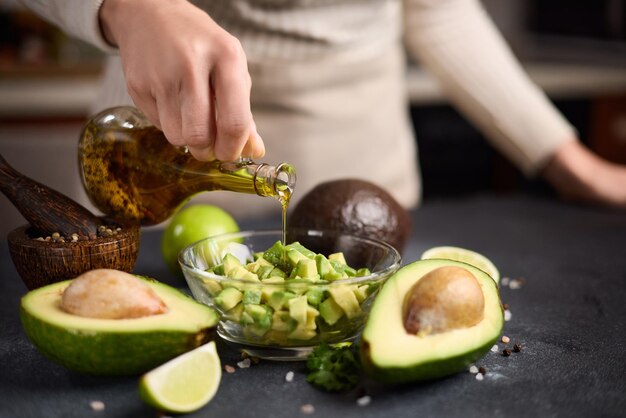In the age of clean eating, natural skincare, and sustainable wellness, avocado oil production is emerging as a golden opportunity for both health enthusiasts and entrepreneurs. With its rich nutrient profile, versatility, and growing demand across global markets, avocado oil is no longer a niche product—it’s a phenomenon transforming the way we consume oils. Whether used in gourmet cooking, cosmetics, or nutraceuticals, avocado oil is quickly becoming an essential staple in health-focused households and commercial industries alike.
Understanding the Rise of Avocado Oil
Avocado oil is extracted from the pulp of ripe avocados, unlike most oils derived from seeds. It boasts a high smoke point, rich flavor, and a dense concentration of monounsaturated fats, antioxidants, and vitamins A, D, and E. These nutritional benefits make it a superior choice for high-heat cooking and a potent ingredient for skin and hair care formulations.
The demand for natural and organic oils has soared in the past decade, and avocado oil’s functional and nutritional advantages have positioned it at the forefront of this shift. As a result, global interest in avocado oil production is gaining momentum, driven by health-conscious consumers and innovative manufacturers alike.
Visit this Page for More Information: Start a Business in Fruits and Vegetables Processing Industry
Health Benefits Driving Avocado Oil Demand
1. Rich in Heart-Healthy Fats
Avocado oil is a powerful source of oleic acid, a monounsaturated omega-9 fatty acid known for reducing bad cholesterol (LDL) and increasing good cholesterol (HDL). This cardiovascular benefit makes it a highly recommended oil by dieticians and health experts.
2. Loaded with Antioxidants
With lutein, beta-carotene, and vitamin E, avocado oil supports cellular health, eye function, and immune strength. Its antioxidant profile also gives it shelf-stability, making it viable for commercial distribution.
3. Enhances Nutrient Absorption
One of the most remarkable properties of avocado oil is its ability to enhance the absorption of fat-soluble nutrients such as vitamins A, D, E, and K when consumed with vegetables.
4. Skin and Hair Nourishment
In cosmetic applications, avocado oil provides deep moisturization, skin regeneration, and anti-aging effects, thanks to its high vitamin and fatty acid content. It is commonly used in serums, conditioners, body butters, and natural healing balms.
Related Feasibility Study Reports: Food Processing and Agriculture Based Projects
Step-by-Step Guide to Avocado Oil Production
Producing high-quality avocado oil requires precision, hygiene, and the right equipment. Here’s a comprehensive breakdown of the avocado oil production process:
Step 1: Selection and Cleaning
Only ripe, high-quality avocados are suitable for oil extraction. Fruits are sorted to remove damaged or overripe avocados. Once selected, they are thoroughly washed to eliminate any dirt, pesticide residues, or foreign materials.
Step 2: De-pitting and Pulping
After cleaning, workers de-pit and peel the avocados. They then mash the flesh into a pulp using stainless steel pulping machines. The quality of the pulp directly affects the yield and purity of the oil.
Step 3: Malaxation (Gentle Heating and Mixing)
The pulp is gently heated and mixed in a process called malaxation. This helps the oil droplets merge and prepare for easier extraction. The process must be carefully monitored, typically under 45°C (113°F), to preserve nutrients and avoid oxidation.
Step 4: Oil Extraction
Mechanical cold-press machines or centrifugal extractors are used to separate the oil from the pulp. Cold-pressed avocado oil retains more nutrients, color, and aroma, making it ideal for premium products.
Step 5: Filtration
After extraction, the oil undergoes filtration to remove any remaining pulp particles, impurities, or moisture. A two-stage filtering process ensures a clear, high-quality oil that meets commercial purity standards.
Step 6: Bottling and Packaging
Workers then fill the filtered oil into sterilized glass bottles, dark PET containers, or drums, depending on the end-use. They ensure the packaging is airtight and light-resistant to protect the oil from spoilage and degradation.
Read Similar Article: List of Profitable Value Added Products from Fruits & Vegetables.
Types of Avocado Oil in the Market
-
Extra Virgin Avocado Oil: Cold-pressed, unrefined, retains original nutrients and flavor. Ideal for salad dressings and skincare.
-
Refined Avocado Oil: Light in color and neutral in flavor. Suitable for high-heat cooking and frying.
-
Organic Avocado Oil: Sourced from certified organic avocados without synthetic chemicals.
Commercial Applications of Avocado Oil
-
Culinary Use: Frying, grilling, baking, salad dressings, mayonnaise alternatives.
-
Cosmetics: Creams, serums, facial oils, shampoos, soaps.
-
Pharmaceuticals: Carrier oil in capsules, medicinal ointments.
-
Nutraceuticals: Dietary supplements, omega-9 enrichment.
Sustainability and Economic Opportunity
Avocado oil production also presents an opportunity for agricultural sustainability and economic empowerment in avocado-growing regions. The industry offers:
-
Job creation in farming, processing, packaging, and distribution
-
Utilization of surplus or cosmetically unfit avocados, reducing food waste
-
High export value, especially in markets like the U.S., Europe, and Japan
Challenges in Avocado Oil Production
Despite its promise, avocado oil production does face challenges:
-
High initial investment in cold-pressing machinery and hygienic facilities
-
Limited shelf life if not stored properly
-
Seasonal variability in avocado availability
-
Price volatility due to global demand and supply chain disruptions
With proper planning, partnerships, and modern technologies, businesses can overcome these challenges.
Read our Book Here: The Complete Technology Book on Processing
How to Start an Avocado Oil Production Business
-
Conduct market research on target industries and export opportunities
-
Secure supply chains with reliable avocado farms
-
Invest in quality extraction and filtration equipment
-
Comply with FSSAI, FDA, or relevant food safety standards
-
Develop branding for culinary and cosmetic segments
-
Focus on organic certification for premium market access
Final Thoughts: The Future is Green with Avocado Oil
As consumers become increasingly aware of what they consume and apply on their bodies, avocado oil production stands at the intersection of health, sustainability, and profitability. It is not only a superfood oil but also a smart business move for forward-thinking producers. With rising demand across food, wellness, and cosmetic sectors, there has never been a better time to explore or expand in the avocado oil market.






